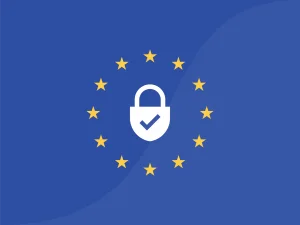Naively, I never expected it to happen to me… yet one night I got an e-mail asking if I had licensed my project management tool to be sold under a different name by a different company.
Luckily I have amazing customers, one of which spotted and notified me of the bootleg seller. Unluckily I had no clue what to do about it.
Previously with my design agency I had a situation where someone had drawn a tad too much inspiration from our work, but a simple “Hey you might want to make this more of your own” was enough of sort things out. The owner of the site loved a design we did, it wasn’t malicious — they were just inspired.
This was different.
This was another company that had purchased, renamed and sold our exact product as if it was their own.
I felt violated.
They even stole and reposted our documentation, sales language and screenshots. The screenshots even included my name.
I was unprepared, but I never will be again. Let me tell you what I found and how we stopped the infringing company.
Understand your rights
Before you do anything you have to know your rights. Any original work posted online can be copyrighted and protected even if you haven’t officially registered a copyright. This can include work that’s been adapted provided the original work has the right license. An image licensed for commercial use and adaptation for example can be modified and copyrighted under a new individual. While GPL open source software can not be copyrighted the images, design and content within it potentially can.
So if you’ve created a digital work that contains text, imagery, photos, video, music, audio, etc… then you have a copyrighted, protectable asset.You can get the infringing work taken down.
So What Do You Do?
Most of the time when someone has posted your copyrighted work in an unauthorized way you’re dealing with the Digital Millennium Copyright Act or DMCA. The law protects copyrighted work posted online and more importantly allows for a commonly used procedure called a DMCA Takedown notice. The notice requests that an ISP, web host, search engine or site owner to remove material infringing on a copyright. The process does not require that you have a registered copyright, which is critical as many of us publish our works without officially registering copyrights.
Provided the infringement is not covered by an exception such as fair use of free speech, then the law is on your side and means you can move up the chain requesting that the work be removed.
Step 1: Fire a Warning
Issuing a DMCA Takedown notice can take time and while you’re preparing one it’s worth contacting the offender and asking them to take the work down. While certainly not all cases there is a chance the party has unknowingly posted the work, someone else has posted it without them knowing or they fear of alternative repercussions.
If your warning falls on def ears it’s time to issue your DMCA Takedown notice.
Step 2: Escalate the Claim
The next step is contacting the organization actually hosting the work online. Typically your looking at an ISP, larger website such as Facebook or Instagram, web host or search engine.
Larger organizations will have an online form for DMCA Takedown requests. In my case, the infringer was attempting to sell my product on a digital marketplace that had it’s own DMCA Takedown request form. If you’re attempting to contact a web host directly you might have to look up their domain registration information to identify which company to contact.
Make sure to pay attention to the specific instructions issued for DMCA Takedown requests. Companies with DMCA agents might have specific ways that they want to take a request and if you fail to follow said instructions it could slow down or stop the effort.
If the website doesn’t have specific instructions or a specific form you’ll need to send your DMCA Takedown request manually. The DMCA act has specific requirements for your letter which you can read more about here.
Most legitimate sites will comply with the request provided the necessary information and process is followed. The alleged infringer can file a counter-notice stating the work does not infringe on your copyright, so this isn’t always an open and shut case.
Being Prepared
I wasn’t prepared for this but I got lucky. While I never herd back from my warning e-mail our software was removed from the offending individuals website and the online marketplace within twelve hours. Had I been prepared I could have better addressed the situation especially had I gotten resistance to my initial takedown warning.
The fact of the matter is, if you’re putting work online sooner or later someone will try and use it without your consent. Getting the work taken down quickly means understanding the steps and being ready to send a DMCA Takedown request. I recommend having one partially prepared so you can respond in minutes not hours.
Here are some resources I’ve found useful during my situation:



